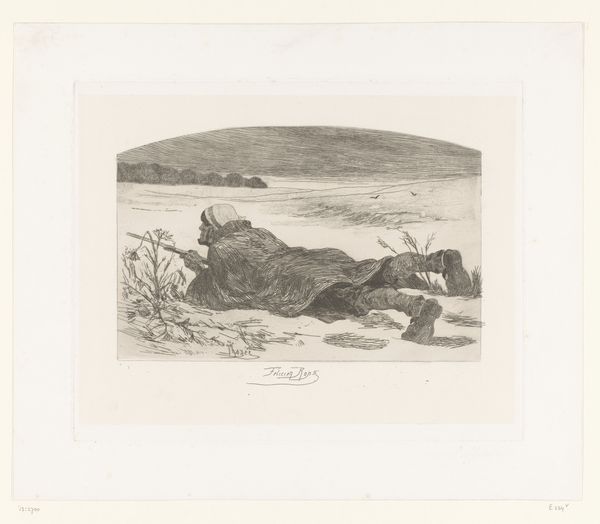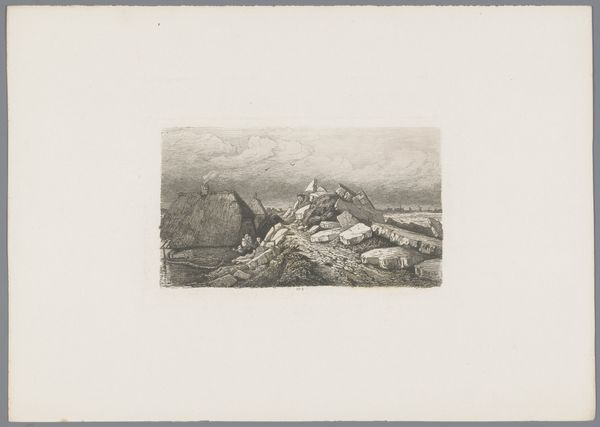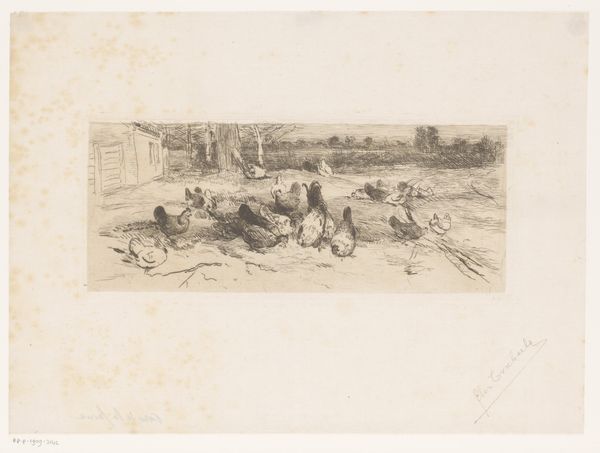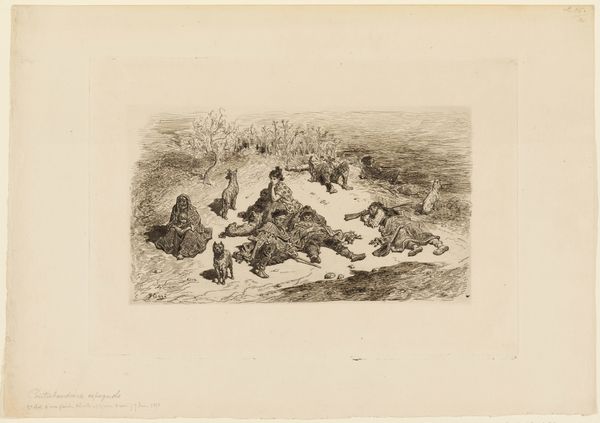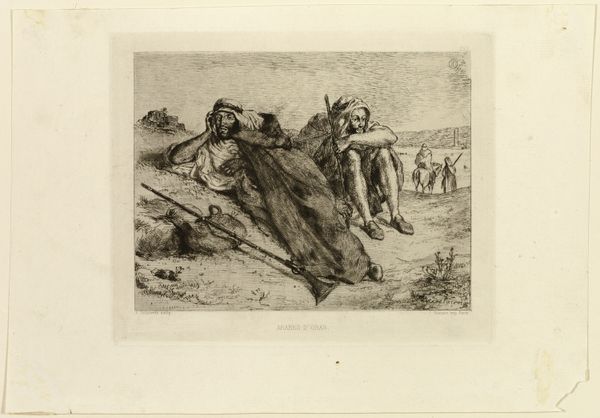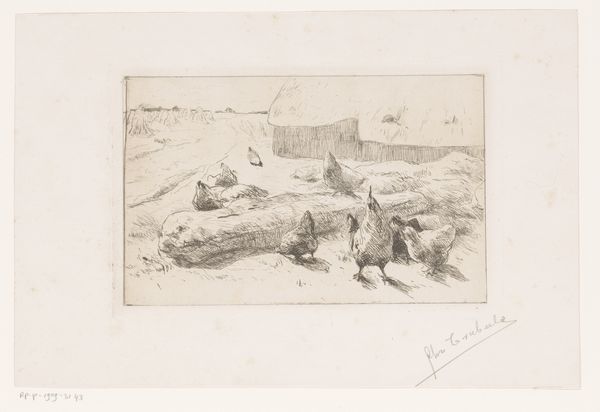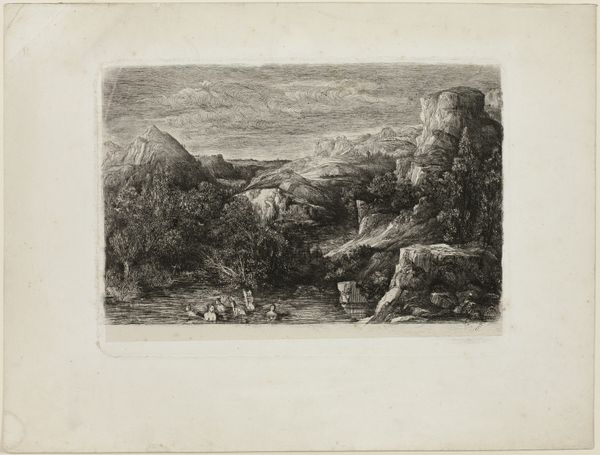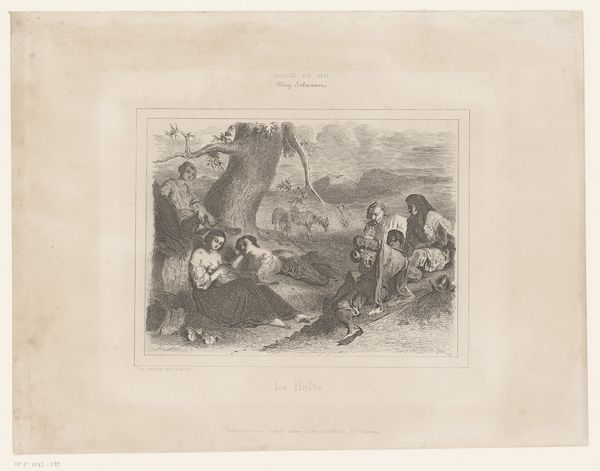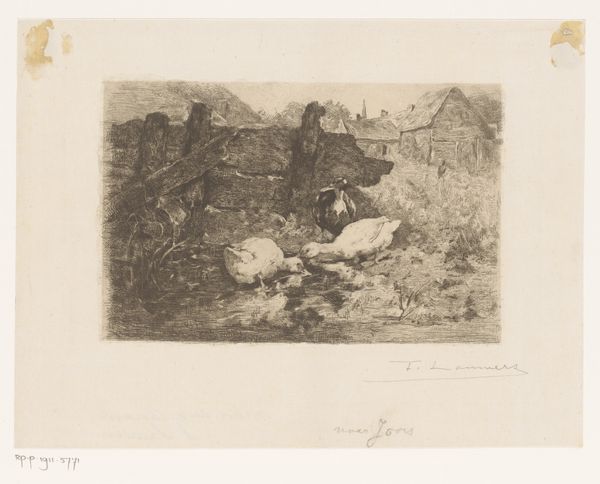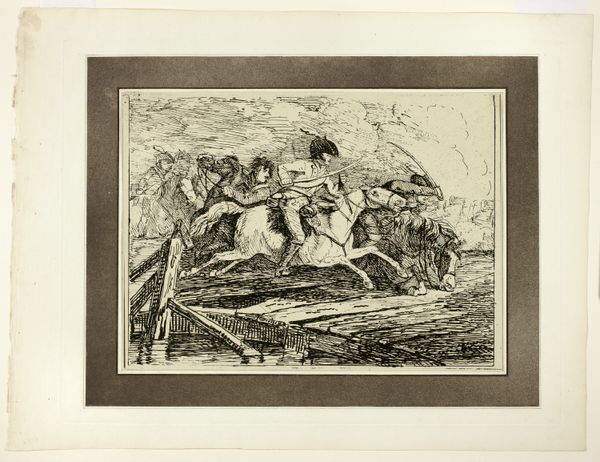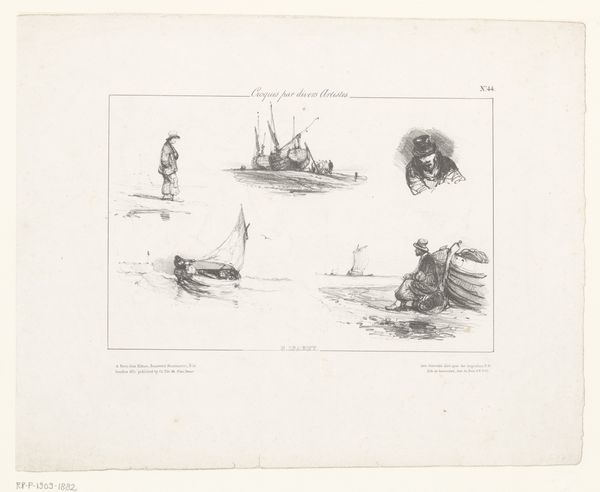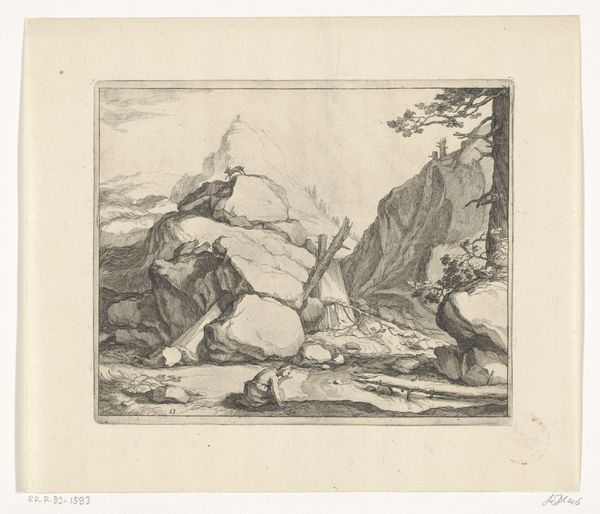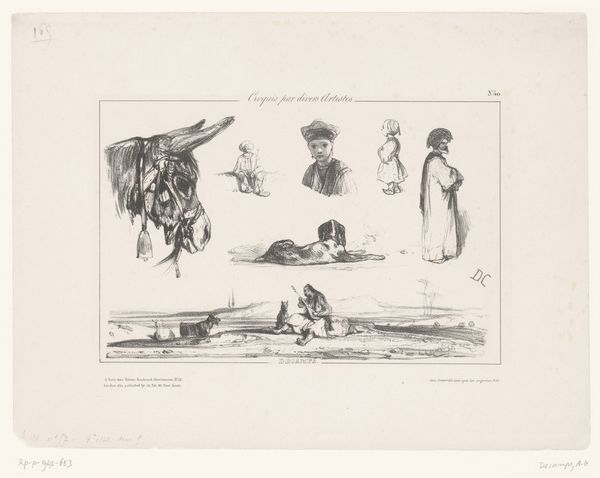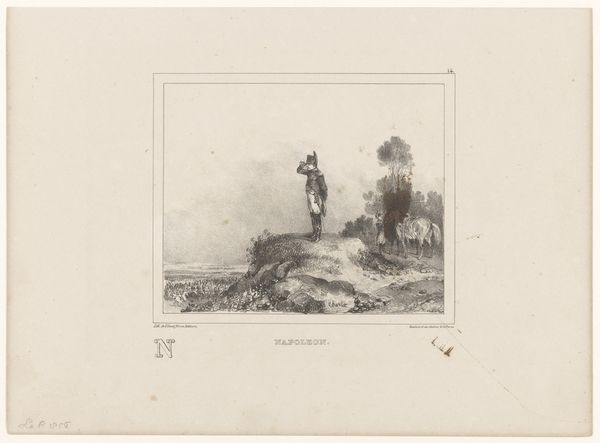
print, etching
# print
#
etching
#
landscape
#
etching
#
figuration
#
history-painting
Dimensions: height 245 mm, width 318 mm
Copyright: Rijks Museum: Open Domain
Curator: Let’s take a moment with Eugène Lepoittevin’s "Studies of Soldiers and a Dead Horse," an etching from 1830 in the Rijksmuseum collection. Editor: Bleak. Just…utterly bleak. It's all these disconnected vignettes hinting at devastation. You get the sense that life has drained from this place, literally with the horse and metaphorically with these slumped figures. Curator: Exactly. It is interesting how Lepoittevin has chosen to present this scene not as a grand heroic spectacle of the Napoleonic wars, but more as studies focusing on the attrition and physical costs of war. The composition and execution highlight the human toll—broken figures in the landscape, the central symbol being of a dead animal. It really underscores a cost that gets overlooked in so many historical narratives. Editor: Absolutely. Look at how the dead horse dominates the foreground. The rendering is fascinating. Raw. Graphic, even. I mean, he’s not shying away from decay; it's almost a commentary on the wastefulness of conflict. Then there's those figures above. So isolated. One sketching? How odd! Like a tourist casually observing horror. Or someone tasked to render it a "landscape", per instructions? Curator: The sketching figure could speak to the way war becomes spectacle, consumed and filtered by artistic representation for various audiences. Lepoittevin is inviting us to reflect on how these realities get mediated, perhaps also implying the banality of it all—sketching the trauma. Let’s also think about access and production, of what becomes reproducible. This being a print, means these studies became readily accessible. Editor: So the intent behind wide distribution affects its meaning! And the materiality itself – an etching – so black and white, so definitive and permanent, adds another layer, doesn’t it? There is an insistence present; a permanence in sharing grief? Curator: A good point. I hadn’t thought about the statement the material makes so viscerally. Editor: It just all feels so far removed from idealized battle scenes. More about attrition and human exhaustion. A powerful testament. Curator: Yes, seeing the aftermath framed in such raw terms offers a critical view. It makes you question the accepted narratives surrounding military conflict and its impact on the world.
Comments
No comments
Be the first to comment and join the conversation on the ultimate creative platform.
